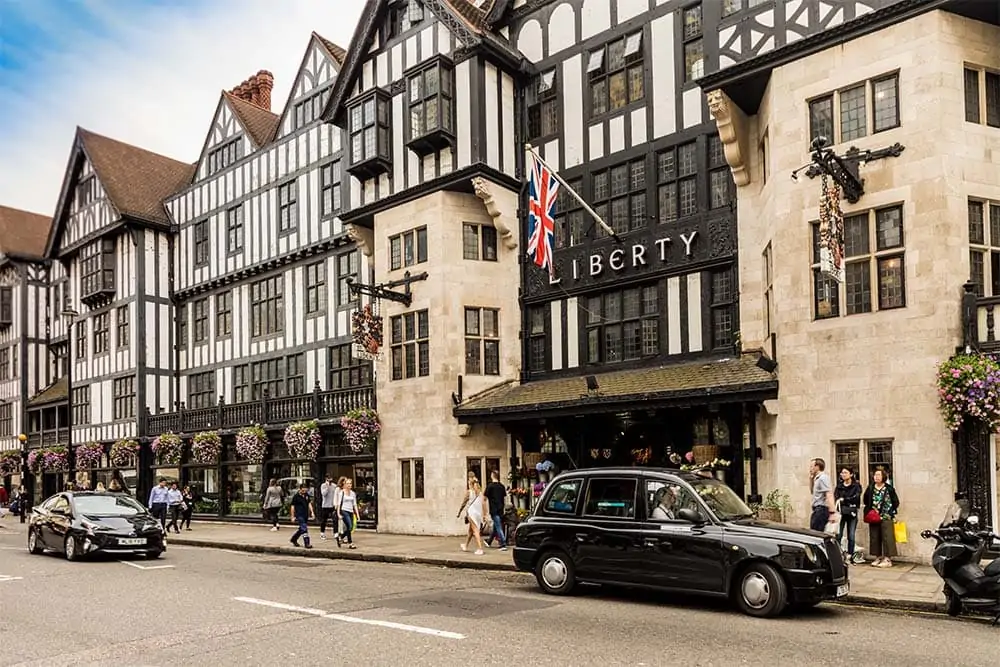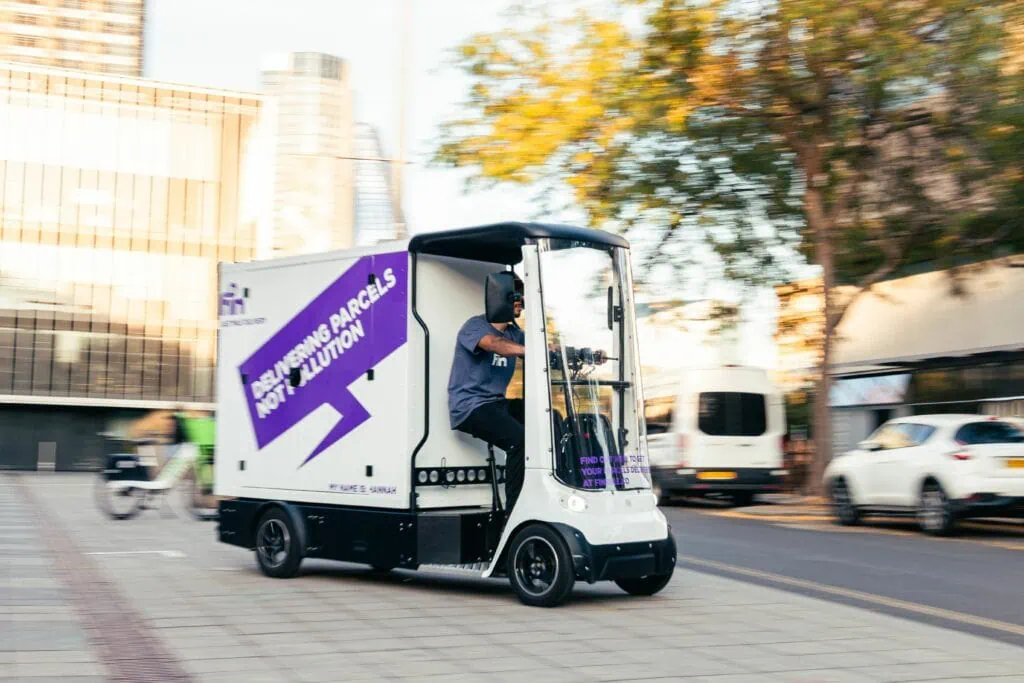
Canada’s traditional export routes have been radically changed in just the first quarter of 2025. US tariffs on Canadian products might have you looking for alternative markets, and if so, the UK is a great place to start.
The UK and Canada share more than just a language. We have a long, stable trading relationship that’s only growing stronger. We have similar product standards and indirect tax systems. Plus, the UK is the stepping stone to Europe. The infrastructure built by our logistics, VAT and other service providers can therefore be relied upon to help you expand further into Europe.
VAT, compliance and fulfillment make starting up in the UK a little more complicated than just making sales, but that’s why we wrote this guide. This is a walkthrough of everything you need to know as a Canadian brand launching into the UK. From VAT essentials to logistics strategies, this is your guide to UK market entry, done right!
Why Export from Canada to the UK?
UK consumers love to shop online, and e-commerce continues to see year-on-year growth. In 2024, 89% of us had bought something online, and online retail sales were valued at £127bn (the highest recorded outside of Covid). Plus, given the current political climate, many UK consumers are looking for Canadian goods to replace products imported from the USA.
If you’re an Amazon seller, you’ll have little competition from other North American brands. Few Amazon merchants sell internationally – less than 1% of US merchants sell outside North America. Plus, Amazon’s UK store is the 4th largest outside the USA by web traffic, meaning a large market with little competition.
Tariff-Free Trade Agreements
The UK-Canada Trade Continuity Agreement (TCA) came into force on April 1st, 2021. The TCA was negotiated to avoid any disruption in trade between Canada and the UK due to Brexit. Most of the agreement reflects the Comprehensive Economic and Trade Agreement (CETA) between Canada and the EU.
Expanding into a new market can be a risky proposition when you factor in the additional burden of tariffs but TCA makes exporting 98% of Canadian-origin goods to the UK tariff-free. Plus, conformity assessment bodies in Canada can assess your products for the UK’s regulations, making it cheaper to prepare your goods for UK consumers.
The best news is that TCA laid the foundation for a deeper free trade agreement, Canada-United Kingdom Free Trade Agreement (CUKFTA). CUKFTA negotiations were shelved a few years ago, but given the events of the first quarter of 2025, all parties involved have expressed interest in picking them back up again. You could establish your business in the UK now and be rewarded with even more favorable exporting conditions in the coming years.
From the UK to the Rest of Europe
If your end goal is to reach customers all over Europe, the UK makes a great place to start. Whilst the UK is no longer in the EU, the European Union is our neighbor and largest trading partner. Having previously been a Member State, we’re used to things like EU regulation, logistics and VAT, and we now work closely alongside EU countries. Once you’re established in the UK, you’ll be working with partners who share a language with you and can use their expertise and resources to help you expand into the rest of Europe.
What does the UK require of Canadian Businesses?
For most Canadian businesses, getting started in the UK is relatively simple. You won’t need to establish a UK business (like a limited company) for example, unless you want a physical business presence here or have larger scale plans, like hiring people.
You’ll need an Economic Operator Registration and Identification (EORI) number to import anything into the UK. EORI numbers help identify all the businesses involved in a customs transaction. Great Britain (GB) and Northern Ireland (XI) have different EORI numbers, despite both being the United Kingdom. This is because Northern Ireland is still in the EU customs union for goods.
Do Canadian Businesses need to Register for UK VAT?
As a Canadian business selling goods to consumers, whether you need to register for VAT in the UK will depend on:
- Where your goods are at the point of sale
- Where you’re selling them (on your own website or an online marketplace)
The UK has a £135 consignment value threshold, which determines the point at which the seller is responsible for the VAT on a shipment. The £135 is the “intrinsic value” of the consignment, which is the value of the goods you’re shipping (not including any other costs like transport or insurance).
The table below shows your VAT responsibilities for Great Britain, not Northern Ireland.
| Sold on your own website | Sold on an online marketplace | ||
| Goods in GB at point of sale | You’ll need to register for VAT. | The marketplace collects and remits the VAT to HMRC, but you’ll need to register for GB VAT because you own the goods held in Britain. The marketplace is considered the Deemed Supplier and you are making a zero-rated supply of goods to them. This transaction needs to be reported to HMRC via the VAT return. | |
| Goods outside GB at point of sale | < £135 | You’ll need to register for VAT. | You don’t need to register for VAT. The marketplace will collect and remit the VAT on your behalf. |
| Goods outside GB at point of sale | > £135 | You decide who will be the Importer of Record: you or your customer. If you are the Importer of Record, then you have to register, then collect and remit the VAT. | You decide who will be the Importer of Record: you or your customer. If you are the Importer of Record, then you have to register, then collect and remit the VAT. |
Do Canadians need to Charge UK Customers VAT?
Once you’re registered for VAT, you need to start collecting VAT from your customers so you can pass it to HMRC (the British Tax Authority). One key difference between Canada and the UK is that we include VAT in the listed price, unless otherwise specified.
You’ll need to work out which VAT rate applies to your products and add that amount to your display prices. For example, if you want to sell a handbag worth £200 to a British customer, the standard rate of VAT in the UK is 20%, so you would list the handbag for £240.
For a more comprehensive look at UK VAT (including how to register or get a refund) download the complete guide here.
UK Product Standards
Goods imported into the UK have to meet three types of product standards:
- Product marking standards
- Labelling standards
- Marketing standards
The UK Conformity Assessment (UKCA) marking is placed on products to show that they meet the standards required in UK legislation. Which rules apply depends on what category your products fall into. You can get detailed information here. If you’re selling goods to Northern Ireland, the EU customs union applies, and the requirements change again to the CE mark.
Product labels in the UK don’t have any single requirement, except that they’re not misleading. Otherwise, only precious metals, footwear, food and drink and children’s products have specific labelling rules.
Product marketing standards in the UK and Canada have a similar foundation: marketing has to be clear, accurate and not misleading. In the UK advertising is regulated by the Advertising Standards Authority (ASA) and they cover all media, from newspapers to social media. Just like labelling, some product categories have specific marketing rules in the UK, like wine and beer.
Shipping from Canada to the UK
Whenever you’re importing goods into the UK you’ll have to deal with customs duty and import VAT. Customs duty is a percentage added on the total value of your shipment – the value of the goods plus added costs like shipping and insurance. The amount of duty depends on the commodity code of your product. Thanks to TCA, most Canadian-origin goods can be exported to the UK duty-free (meaning you skip an additional fee of up to 12%).
Import VAT is calculated based on the value of the goods plus costs, plus duties. If the standard rate of VAT applies to the goods you’re importing, you’ll add another 20% to the cost of the import.
Fulfillment from Within the UK and EU
Customs Duty and Import VAT quickly rack up, especially if you’re importing individual consignments. It might be practical whilst you’re testing the waters in the UK – but long term you might want to consider a UK or EU-based logistics partner. Bulk imports and local distribution reduce risk, avoid costly tariffs and speed up deliveries.
It’s easier to meet the expectation of the average UK consumer for speedy delivery if you’re not shipping directly from Canada. Faster delivery times make you more competitive and make delivery of your product more sustainable. It also opens you up to more efficient retail opportunities within the UK and EU, making your brand accessible wherever your customer shops.
Returns are unavoidable, but if you get them right, you’ll win repeat customers. Having an in-market 3PL partner will move your returns process closer to the customer. They’ll get faster refunds or replacements, and you’ll have swifter re-stocking and better visibility of where your products are.
Your Trusted UK and EU 3PL Partner
If you’re looking for opportunities outside of the US, the UK and EU markets have a lot to offer and working with an experienced 3PL in those markets is key to your growth. ILG has 30 years of omnichannel fulfillment expertise, with 12 strategically placed facilities across the UK and EU.
We specialize in fulfillment for high-growth brands and work with some of the biggest names in beauty, fashion, wellbeing and lifestyle and partner with experts in VAT and compliance to help get your brand to market as easily and cost efficiently as possible.
Find out more about our fulfillment for Canadian brands here or get in touch to discuss your UK and EU expansion needs today.
Contact Us
More insights >
ILG Partners with Fin – Sustainable Logistics
ILG is thrilled to announce its new partnership with Fin Sustainable Logistics, a pioneer in zero-emissions delivery services.
ILG Wins GDBA Environmental Culture Award!
ILG was awarded the Environmental Culture Award at the Gatwick Diamond Business Awards 2025!

